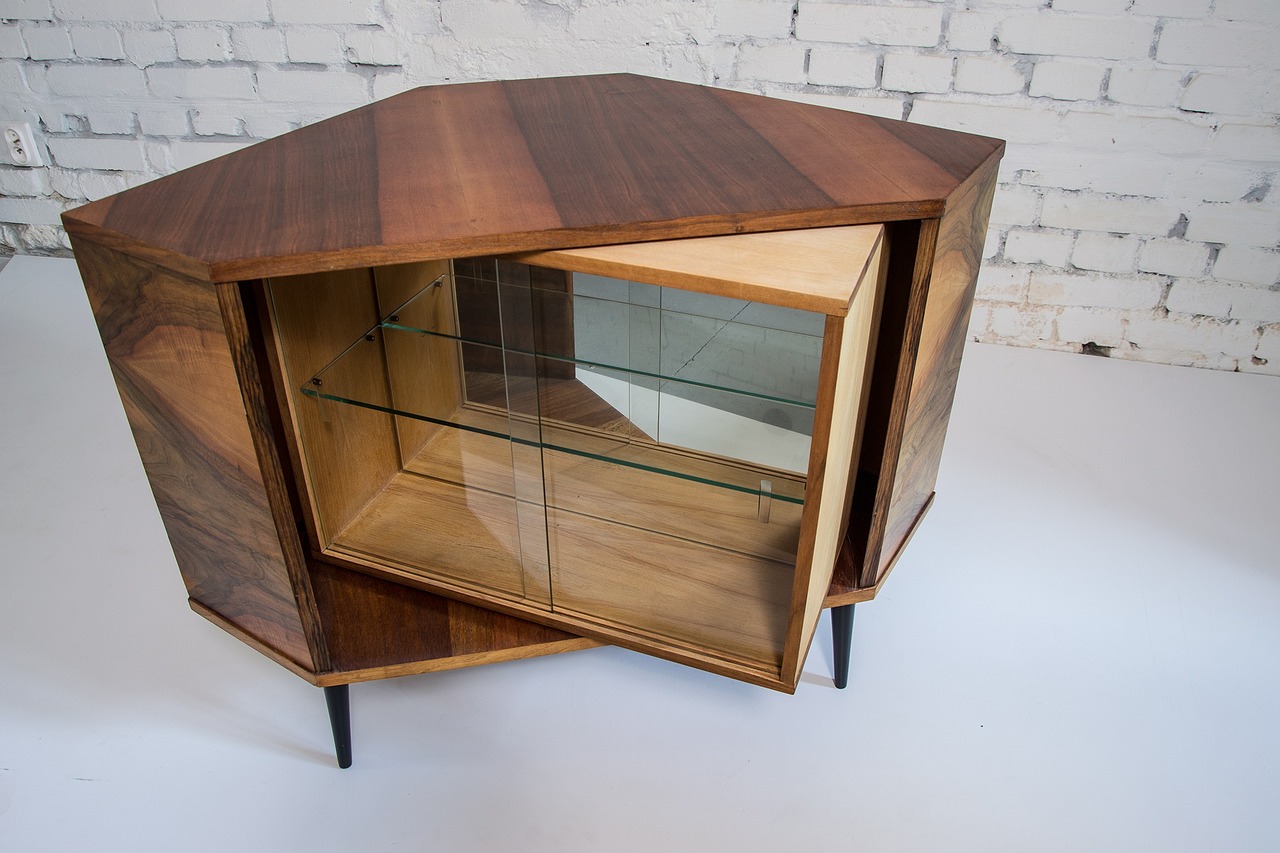
The Ultimate Guide to Choosing the Perfect Wine Cabinet for Your Home
Selecting the perfect wine cabinet for your home can significantly elevate both the aesthetic and functional aspects of your space, all while protecting your wine collection. Whether you’re a casual wine enthusiast or a serious connoisseur, choosing the right wine cabinet is essential for proper storage, aging, and display. This comprehensive guide will help you navigate through the various factors to consider before making your purchase.
Why Invest in a Wine Cabinet?
Before we dive into the details of choosing the right wine cabinet, let's talk about why it's a good investment. A wine cabinet isn’t just a storage unit; it’s a tool for preserving and aging wine properly. Storing wine in optimal conditions—controlled temperature, humidity, and low light—ensures that it matures perfectly, developing flavor profiles as intended.
Key Benefits of a Wine Cabinet:
- Temperature Control: Consistent temperature is crucial for wine preservation. A wine cabinet helps maintain an ideal range of 45-65°F (7-18°C), preventing premature aging or spoilage.
- Humidity Management: Proper humidity levels (around 50-70%) prevent corks from drying out and maintain the quality of the wine.
- UV Protection: Glass doors with UV protection or opaque designs help shield wines from damaging sunlight, which can degrade both flavor and color.
- Organization: Wine cabinets come with shelves and racks designed to organize your collection and make each bottle easily accessible.
- Aesthetic Appeal: Wine cabinets are an elegant addition to your home, blending functionality with style.
Step 1: Determine Your Wine Storage Needs
When selecting a wine cabinet, the first thing to consider is how much wine you currently own and how much you plan to collect in the future. Wine cabinets come in various sizes, so identifying your storage needs will narrow down your options.
Factors to Consider:
- Size of Collection: Estimate the number of bottles you want to store. For a smaller collection (up to 50 bottles), a compact cabinet will suffice, while larger collections (100 bottles or more) may require a larger or multi-unit cabinet.
- Types of Wines: If your collection includes a mix of reds, whites, and sparkling wines, you may need a wine cabinet with multiple temperature zones to store each type of wine at its optimal temperature.
- Aging Wines: If you are aging wines, look for a cabinet with more precise temperature and humidity controls to ensure long-term preservation.
Step 2: Choose the Right Type of Wine Cabinet
There are several types of wine cabinets available, each with unique features. Understanding the differences will help you find a model that fits your space and your lifestyle.
1. Freestanding Wine Cabinets
Freestanding cabinets are ideal for homeowners who want flexibility in where to place their unit. These are standalone models that can be placed in the dining room, living room, or even a dedicated wine cellar. They tend to be more affordable and offer a wide range of sizes.
- Pros: Flexible placement, wide selection, often more affordable.
- Cons: Requires floor space, may not blend seamlessly with other furniture.
2. Built-In Wine Cabinets
Built-in wine cabinets are designed to be integrated into your kitchen or bar area. These units fit perfectly under countertops or between existing cabinetry for a seamless look. They are ideal for those who want their wine storage to blend with their home’s design.
- Pros: Seamless integration, great for kitchens or bars, space-saving.
- Cons: More expensive, requires professional installation, less flexibility in placement.
3. Countertop Wine Cabinets
Countertop cabinets are perfect for smaller collections or tight spaces. These compact units typically store between 6 to 20 bottles and are perfect for casual wine drinkers or as a complement to a larger wine cellar.
- Pros: Space-efficient, affordable, easy to move.
- Cons: Limited storage capacity, not ideal for long-term aging.
4. Wine Fridges (Coolers)
If temperature control is your top priority, a wine fridge might be the best option. These units offer precise temperature management and are available in single or dual-zone models. Dual-zone fridges allow you to store reds and whites at different temperatures in the same unit.
- Pros: Superior temperature control, great for mixed wine collections.
- Cons: Often lacks the aesthetic appeal of traditional wine cabinets, may be noisier.
Step 3: Consider the Design and Material
Your wine cabinet will likely become a focal point in your home, so the design and material should complement your décor. Wine cabinets come in various styles, from rustic wooden finishes to sleek, modern metal designs.
Popular Design Features:
- Wood: Traditional, warm, and timeless. Oak, mahogany, and cherry are common choices for wooden wine cabinets.
- Metal and Glass: Sleek, modern, and industrial. Metal frames with glass doors provide a contemporary look.
- Custom Options: If you have a unique aesthetic in mind, consider a custom-built wine cabinet. You can choose everything from the wood stain to the door handle design.
Shelving and Interior:
- Sliding Shelves: Sliding shelves make it easier to access and organize your collection.
- Adjustable Shelves: These allow you to store different bottle sizes, such as larger champagne bottles.
- Lighting: Interior lighting, especially LED, not only enhances visibility but also adds a luxurious touch to your cabinet. Ensure the lighting is soft and UV-free to avoid damaging the wine.
Step 4: Look for Key Features
When browsing for a wine cabinet, consider some of the essential features that will enhance the storage and preservation of your wines:
1. Temperature Zones
- Single Zone: Ideal if you mainly store one type of wine.
- Dual Zone: Perfect for storing both reds and whites in separate sections at different temperatures.
2. Humidity Control
Look for a wine cabinet with built-in humidity control to keep the corks moist and prevent oxidation. Humidity control is essential if you're planning to store wine long-term.
3. UV-Resistant Glass
If you’re choosing a cabinet with glass doors, ensure it has UV protection. Ultraviolet light can degrade the quality of wine over time.
4. Vibration Dampening
Constant vibration can disturb the sediment in wine bottles, negatively affecting the aging process. Choose a cabinet that minimizes vibration, especially for delicate wines.
5. Lock and Security
If you’re concerned about safety, especially in homes with children, consider a cabinet with a locking mechanism to prevent unauthorized access.
Step 5: Placement and Space Considerations
Before purchasing a wine cabinet, think carefully about where you will place it. Wine cabinets require proper ventilation, so make sure to leave enough space around the unit for airflow, especially for freestanding models. Built-in cabinets should fit snugly in their designated space, and countertop models should have enough clearance for easy access.
Tips for Placement:
- Keep Away from Heat: Avoid placing your wine cabinet near heat sources such as ovens, dishwashers, or direct sunlight.
- Stable Surface: Ensure the floor is level to prevent wobbling or damage to your bottles.
- Proximity to Dining Area: For easy access during meals or gatherings, place the wine cabinet near the dining or entertaining area.
Step 6: Budget Considerations
Wine cabinets come in a wide price range, from affordable units under $500 to luxury models costing several thousand dollars. The price will depend on the size, material, and features of the cabinet. Here’s a quick guide to help you budget:
- Entry-Level: $200-$500 for smaller, freestanding or countertop units.
- Mid-Range: $500-$1,500 for larger freestanding or built-in models with advanced features.
- High-End: $2,000+ for custom, luxury wine cabinets with all the bells and whistles.
Conclusion
Choosing the perfect wine cabinet for your home involves more than just picking a pretty piece of furniture. Consider the size of your wine collection, the type of cabinet that fits your lifestyle, and the features necessary to preserve your wine. With the right wine cabinet, you’ll not only enhance the aesthetic appeal of your home but also protect and showcase your collection for years to come.
Whether you’re a casual wine drinker or a serious collector, investing in the right wine cabinet is a step towards enjoying your wine to its fullest potential.
